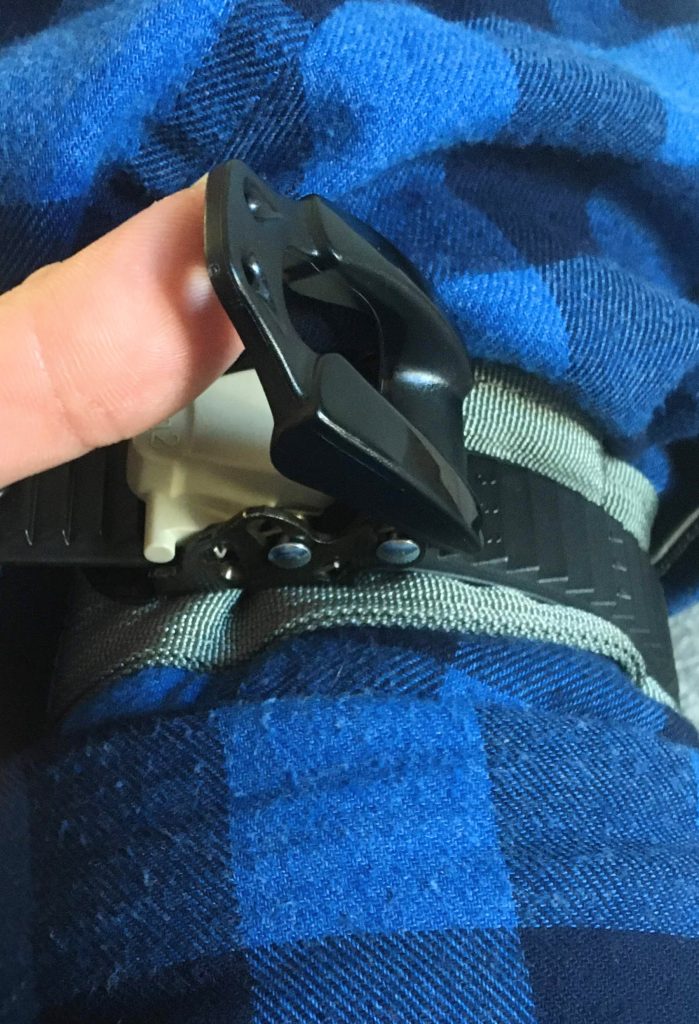
Along with the SAM-XT, another newer addition to the CoTCCC recommendations for non-pneumatic limb tourniquets is the RMT by m2 inc.

It uses a fairly standard buckle design, pictured above, which can be a bit “fiddly” if you have to weave it through the buckle under stress. Also, one-handed application is a bit of a challenge – I discovered it was possible by pinning the main part of the tourniquet with the “injured” arm against the body, but if I didn’t do that, the RMT just kept going around and around in circles.
This buckle design also creates an opportunity to pull fabric (or skin, theoretically) through the center of the buckle while cinching it down:

Not a deal-breaker to be sure, but not ideal.
The RMT is one of two designs for a non-windlass tourniquet to be approved by CoTCCC – the other is the “TX2/TX3 tourniquet” which literally uses the same ratchet system – it’s literally marked “m2”.

The only difference I can see from photos is the TX3 seems wider than the RMT, but I suspect they function almost identically, though the additional width of the TX3 appeals to me in a general sense (thicker tourniquets have been repeatedly shown to cause less tissue damage).
I’m not sure who ripped off whom, but I suspect there are some hurt feelings somewhere here.
But I digress… as usual.
The RMT is actuated by pulling up on the lever; I’m a bit skeptical that the amount of leverage that can be provided by the small ratchet mechanism is comparable to the amount that a windlass can provide (the mechanism all the other non-pneumatic extremity tourniquets on the CoTCCC list use).

Right 
Wrong
The only other comment I’ll add is that the RMT has a bit of its “zip tie” portion that sticks out past the actual bit you’re meant to lever on, and could be accidentally levered on instead of the actual mechanism under stress.
Overall my biggest concern with the RMT is the challenge I experienced when attempting to apply it one-handed – otherwise it definitely seems like it has potential, but I’d be curious to get my hands on a doppler and see how well it occludes.
Until next time.
-T